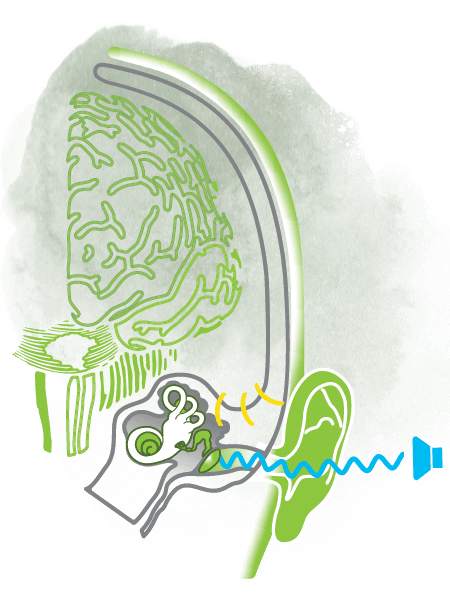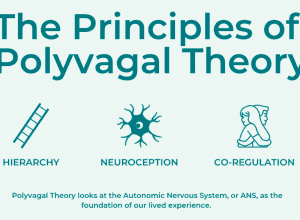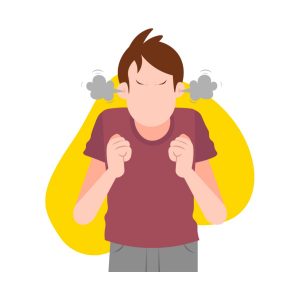Non-invasive vagus nerve stimulation: what is it and how does it work?
Non-invasive vagus nerve stimulation (nVNS) is a therapy that works by stimulating the vagus nerve, which is a key part of our autonomic nervous system. This therapy has shown potential in treating various conditions and improving overall well-being.
One application of non-invasive vagus nerve stimulation is listening therapy, which involves the use of specially filtered music and over-the-ear headphones to deliver gentle stimulation to the auricular branch of the vagus nerve. Research suggests this therapy can help regulate autonomic functions and enhance neuroplasticity.
One specific program that utilizes non-invasive vagus nerve stimulation is the Safe and Sound Protocol (SSP).


Interested in exploring Polyvagal Theory and Unyte Health’s programs?
The Safe and Sound Protocol:
Non-Invasive Vagus Nerve Stimulation?
The Safe and Sound Protocol (SSP) is an acoustic, non-invasive vagus nerve stimulator created by Dr. Stephen Porges, author of the Polyvagal Theory. The Safe and Sound Protocol can be used by mental and physical health professionals to help clients access a physiological state conducive to well-being, positive engagement with others, and growth in learning and therapy. It has shown promising results in managing a wide range of conditions.
Based on hierarchical recruitment of the autonomic nervous system, the SSP trains the middle ear muscles to tune-in to cues of safety signaled by the frequencies of human voice, which stimulates the social engagement system through the neural network associated with listening. This ushers the nervous system out of a defensive (fight, flight or freeze) state and into a socially engaged (ventral vagal) state.
The Science and Benefits of Vagus Nerve Stimulation
The vagus nerve helps to regulate many critical aspects of human physiology, including the heart rate, blood pressure, sweating, digestion, and even speaking. As the body takes in information automatically through neuroception, the vagus nerve processes the signals and cues from the world around us and determines how we react through the three physiological states.
Due to neuro-developmental differences, early developmental trauma or other factors like anxiety or sensory processing differences your clients’ autonomic nervous system may be stuck in a sympathetic or dorsal vagal state, which can present in a variety of ways.
Being stuck in a sympathetic or dorsal vagal state can present in a variety of ways including: hypervigilance, dissociation, social anxiety or isolation, struggles with transition or changes in routine, poor sleeping, eating, or toileting, avoidance, refusals and/or difficulty following directions, frequent emotional upset and disruptive behaviors.
If chronic, these states can inhibit the outcomes of traditional therapy and result in a physiological feedback loop of defense. But by stimulating the vagus nerve appropriately, programs like the Safe and Sound Protocol can help clients ease out of this state of chronic defense and become more available for therapy.
The three physiological states:
Parasympathetic / Ventral Vagal State
Our centered “true self” state, where all social interaction, connection and cognition occurs
Sympathetic State
Feeling of threat or danger, and feeling the need to either “fight” or “flee” from a situation to seek safety
Dorsal Vagal State
Our “freeze” state, when we feel our lives are so immediately threatened that we become immobilized
The Physiological Feedback Loop of Defense

The Safe and Sound Protocol interrupts and redirects this feedback loop with cues of safety.
The SSP interrupts chronic states of nervous system defense by stimulating the neural networks associated with listening.
The SSP uses algorithmically filtered music focused on the frequency range of the human voice that alters the way sounds are interpreted.
This ushers the nervous system out of a defensive (fight, flight or freeze) state and into a socially engaged (ventral vagal) state.
Support Your Clients’ Nervous Systems with the SSP
Continue Your Learning
These resources will provide an introduction to Polyvagal Theory and the Safe and Sound Protocol.

E-Book: The Polyvagal Theory and You
Download this free eBook for a simple and visual explanation of Polyvagal Theory and the nervous system, suitable for children and adults.

Infographic: The Organizing Principles of Polyvagal Theory
Download this free educational infographic based on the teachings of Polyvagal Theory expert Deb Dana, LCSW.

Webinar: Simplifying the Safe and Sound Protocol
Watch this on-demand webinar to get an in-depth understanding of Dr. Stephen Porges’ Safe and Sound Protocol.








 © 2025 Unyte Health US Inc.
© 2025 Unyte Health US Inc.